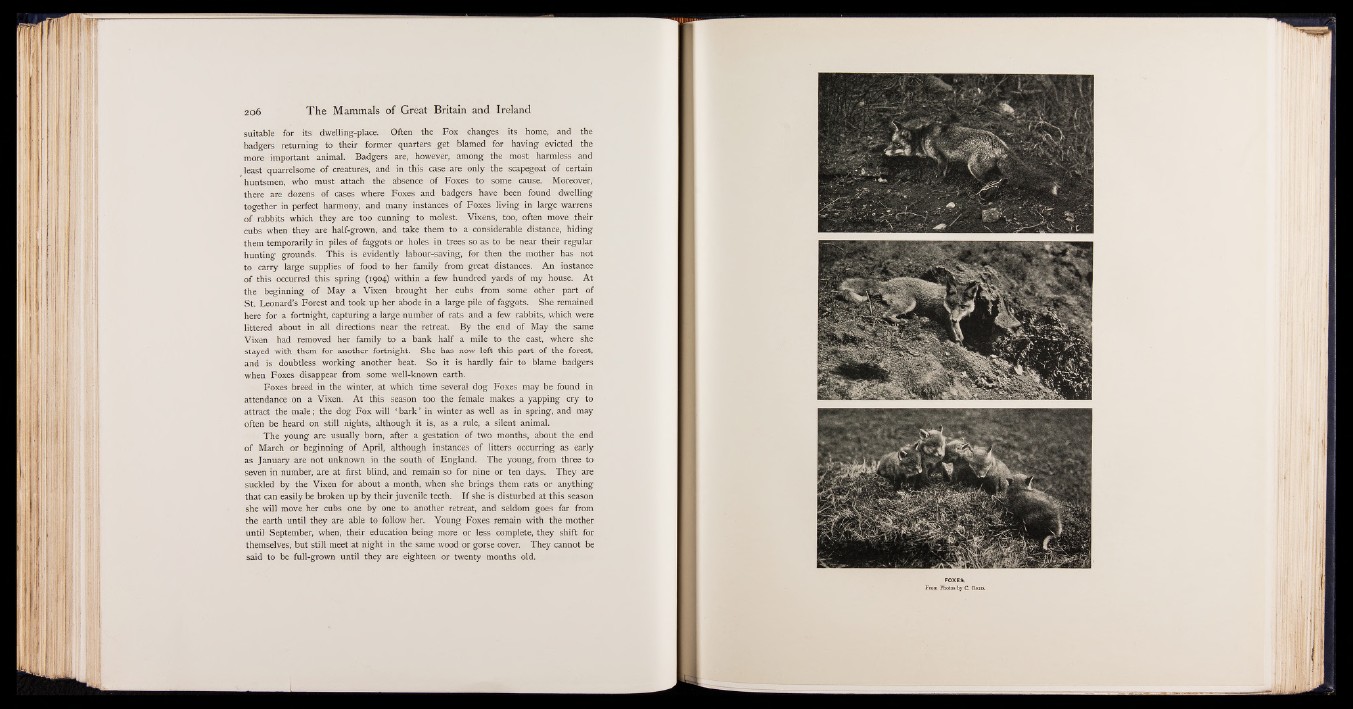
suitable for its dwelling-place. Often the Fox changes its home, and the
badgers returning to their former quarters get blamed for having evicted the
more important animal. Badgers are, however, among the most harmless and
least quarrelsome of creatures, and in this case, are only the scapegoat of certain
huntsmen, who must attach the absence of Foxes to some cause. Moreover,
there are dozens of cases where Foxes and badgers have been found dwelling
together in perfect harmony, and many instances of Foxes living in large warrens
of rabbits which they are too cunning to molest. Vixens, too, often move their
cubs when they are half-grown, and take them to a considerable distance, hiding
them temporarily in piles of faggots or holes in trees so as to be near their regular
hunting grounds. This is evidently labour-saving, for then the mother has not
to carry large supplies of food to her family from great distances. An instance
of this occurred this spring (1904) within a few hundred yards of my house. At
the beginning of May a Vixen brought her cubs from some other part of
St. Leonard’s Forest and took up her abode in a large pile of faggots. She remained
here for a fortnight, capturing a large number of rats and a few rabbits, which were
littered about in all directions near the retreat. By the end of May the same
Vixen had removed her family to a bank half a mile to the east, where she
stayed with them for another fortnight. She has now left this part of the forest,
and is doubtless working another beat. So it is hardly fair to blame badgers
when Foxes disappear from some well-known earth.
Foxes breed in the winter, at which time several dog Foxes may be found in
attendance on a Vixen. At this season too the female makes a yapping cry to
attract the male; the dog Fox will ‘ bark ’ in winter as well as in spring, and may
often be heard on still nights, although it is, as a rule, a silent animal.
The young are usually born, after a gestation of two months, about the end
of March or beginning of April, although instances of litters occurring as early
as January are not unknown in the south of England. The young, from three to
seven in number, are at first blind, and remain so for nine or ten days. They are
suckled by the Vixen for about a month, when she brings them rats or anything
that can easily be broken up by their juvenile teeth. If she is disturbed at this season
she will move her cubs one by one to another retreat, and seldom goes far from
the earth until they are able to follow her. Young Foxes remain with the mother
until September, when, their education being more or less complete, they shift for
themselves, but still meet at night in the same wood or gorse cover. They cannot be
said to be full-grown until they are eighteen or twenty months old.